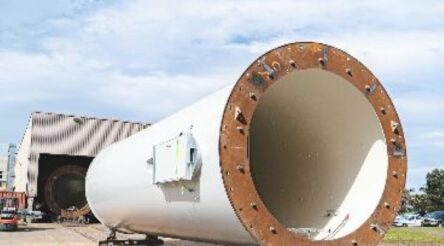The surge to renewables promises cheaper power for manufacturing – by Ben Waters

Manufacturers have experienced a sudden shift from cheap, fossil fuel electricity to expensive generation. Now the shift to renewables is on, and manufacturers are beginning to free themselves from the grasp of high fossil fuel prices. Here sustainability and cleantech leader Ben Waters discusses the new reality of renewably generated electricity.
Manufacturing is key to our economy and allows Australia to live more within its local means. The decentralisation megatrend supports local manufacturing and increasingly allows us to power efficient local operations with indigenous clean energy.
Our manufacturing industry ensures a degree of national self sufficiency and in the past was often based on our local advantages, including cheap energy. However cheap energy alone doesn’t confer a continuing advantage. Competitors with higher-cost energy tend to be more efficient with it.
Work GE carried out with Vivid Economics and Norton Rose in 2011 showed Australian manufacturing was less energy productive than ten major competitor nations, and I’m not sure that position has materially changed since.
While we had cheap energy, our total energy bills were similar to overseas competitors. And our cheap energy was much more carbon-intense than competing economies, so our products were susceptible to a future carbon price.
Over the past two decades our energy prices have more than tripled, due to a range of factors. We have gone from having cheap, dirty energy to having expensive, dirty energy.
This has done two things: there have been some welcome gains in energy productivity, and our energy mix has started the fundamental shift towards a low-carbon system.
This has been most apparent in electricity, where new wind and solar projects have become the cheapest form of new generation, and as they have zero fuel cost once built, they tend to lower wholesale electricity prices when generating. Gas tends to set the electricity prices in periods where it has less competition from renewables and gas prices have been high. More renewables reduces the ability of gas generators to set the price.
This trend has been particularly apparent in the National Electricity Market since last November. NSW wholesale prices in Jan-Oct19 were just shy of $90/MWh on average. From 1 Jan until mid September 2020 NSW wholesale prices have averaged less than $60.
This does not appear to be an aberration; the futures market expects prices in the mid $50s until 2023, after which they may rise again slightly when the Liddell coal power station finally retires. A fresh wave of renewable electricity projects would tend to reduce or eliminate that price rise.
Manufacturers are now able to access the low generation cost of large-scale, new renewable projects directly, and this is bringing savings and long-term cost stability. Examples include ANCA, BlueScope Steel and Molycop and these offtake agreements help bring on the next wave in renewable generation that will keep electricity prices lower for all.
Recent reports suggest that even the largest users of electricity may be able to switch to new renewable electricity sources. The Grattan Institute argues that ‘Green steel’ “could help make Australia a renewable energy superpower, and represents the best opportunity for exports and job creation in key regions”.
The Institute for Energy Economics and Financial Analysis (IEEFA) says “Australia has the potential to become a much more significant economic power in a decarbonised world”, particularly with the conversion of existing aluminium smelters to renewable electricity. Climateworks shows how technologies in each sector can achieve climate goals while rebuilding a resilient economy and recently launched the Australian Industry Energy Transitions Initiative working with Climate-KIC Australia.
Finally, WWF and Presync, working with the NSW Government recently launched a report on opportunities to “reshore” manufacturing of low-carbon building and construction materials, and a Leaders’ Group to turn this effort into reality.
On gas, it is increasingly possible for manufacturers to avoid direct combustion of a costly fossil fuel, either replacing it with biogas or, preferably, by progressively electrifying gas loads. A fully-electric facility can be more self-sufficient using on-site solar and storage.
Electric heat pumps offer more efficient energy conversion than fuel combustion as they use a refrigerant cycle to leverage multiples of heating energy output for each unit of electrical energy input. Industrial electric heat pumps are increasingly displacing gas in innovative manufacturing. The extra electrical load can be provided for locally by increasing solar PV capacity and heat pumps can enable thermal storage of excess solar energy without the need for a battery.
The goals of the 2015 Paris Agreement – particularly the move to a net-zero carbon economy by 2050 – imply a need to largely remove fossil fuel generation sources, decarbonising our energy networks.
Gas is a primary fossil fuel and it has proved difficult to decarbonise the gas network. There are some efforts going into renewable gas, for example by Interface, though these efforts are at least a decade behind corporate offtake of renewable electricity. Decarbonisation of the electricity grid is in full swing.
Ben Waters is co-founder and strategy director of Presync, a business established to design, deliver and operate local energy and water systems for precincts. He has a disti8nguished history across business, including as commercial director and director of ecomagination at GE Australia. Ben is a past Chair of Sustainable Business Australia.
Picture: Ben Waters
Subscribe to our free @AuManufacturing newsletter here.
@aumanufacturing Sections
Analysis and Commentary Awards Defence Manufacturing News Podcast Technology Videos










